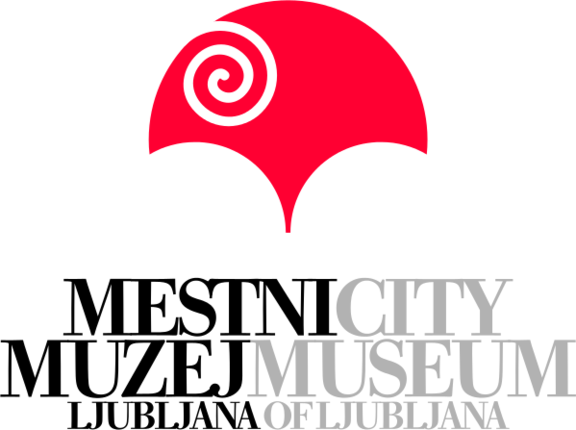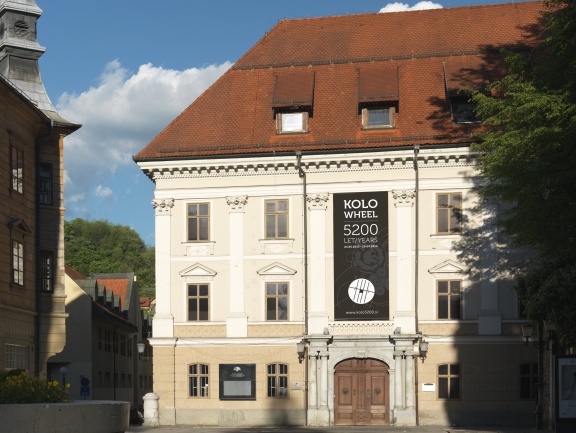Difference between revisions of "City Museum of Ljubljana"
m (City Art Museum Ljubljana) |
(→External links: added link) |
||
| Line 68: | Line 68: | ||
* [http://www.slovenia.si/mma_bin.php?id=2009052914142075 Article on the 200th anniversary of Napoleon's Illyrian Provinces project] (pdf), [[Sinfo Magazine]] (pp. 6-9) | * [http://www.slovenia.si/mma_bin.php?id=2009052914142075 Article on the 200th anniversary of Napoleon's Illyrian Provinces project] (pdf), [[Sinfo Magazine]] (pp. 6-9) | ||
* [http://www.ofis-a.si/default.cfm?Kat=0409&ProdID=52 Renovation of the City Museum by Ofis Arhitekti] | * [http://www.ofis-a.si/default.cfm?Kat=0409&ProdID=52 Renovation of the City Museum by Ofis Arhitekti] | ||
| + | * [http://www.visitljubljana.si/en/ljubljana-and-more/ljubljana-database/1834/detail.html Auersperg Palace description at Visit Ljubljana website] | ||
Revision as of 12:42, 18 March 2010
The employees of the City Museum of Ljubljana are doing their best to create a modern, open and visitor-friendly museum, that becomes a cultural hot spot and a promoter of city's identity. Interesting museum offer for those who like to explore city on their own is GPS Guide to Emona that enables you to make your own guided tour through the remains of the Roman city according to your interest and time availability.
Featured artefact
One of its most interesting artefacts is the world's oldest wooden wheel with the axle (3350 to 3100 BC). It was excavated from the remains of the pile dwelling settlement in the Ljubljana marshes and has a radius of 70 centimetres. It is technologically advanced, made of two ashen panels of the same tree. The axle is 120 centimetres long and made of oak. Most probably the findings belonged to a single-axle cart.
Collections
The City Museum of Ljubljana research and protection field are collection, preservation, documentation and research of the Ljubljana city has collected materials, documents, invested in knowledge, exhibitions and events that represent Slovene capital and its inhabitants. Restoration and conservation experts of the museum are forming Ščit - Conservatory Centre of the City Museum of Ljubljana whose duties are to survey and improve the condition of museum items in collections and exhibitions.
Exhibitions
On the spot where the main museum building is today in Auersperg Palace, extensive archaeological excavations were carried out when museum was renovated between years 1995 and 2003. Pre-historic graves from 1000–800 BC, remnants of Roman buildings and one of the main roads which once connected the ancient city of Emona with other Roman cities. The fact that the road was maintained in the early middle ages had a huge impact also on the layout of the medieval city centre. Almost 2000 year old canal system was discovered which was in function until renovation. The Auersperg Palace stands at the southwest part of Novi trg (New Square) dating from the 14th century. Archaeological and construction research has shown fazes of building of Auersperg palace documented in 1547. Baron Herbart VII von Auersperg bought the building in 1575. Findings and history layers are included in structure of the new museum building and can be seen through glass in underground exhibition spaces and coffee shop. Museums permanent exhibition The Faces of Ljubljana show historical development and changes how the Ljubljana of today has evolved; from prehistoric settlements, the Roman town of Emona, the medieval city with its three parts, to the modern urban capital of Slovenia. Exhibition can be roughly divided into three chapters; stories about Ljubljana the place, about the people and, Ljubljana is today with local government, its economy, and role as a scientific and cultural centre.
Temporary exhibitions in City Museum of Ljubljana tend to be blockbuster exhibitions with famous names such as Picasso, Marc Chagall, Roberto Capucci, Rihard Jakopič ... Temporary exhibitions on important historical events also take place, for instance: Primož Trubar, author of the first Slovenian book (1550) or 200 years of the Napoleonic Illyrian Provinces. They prepare them with collaboration of partners, collectors, artists, curators ... and museum employees that are open to suggestions.
Museum spaces can be rented for organising conferences, seminars, celebrations, business events and protocol receptions. The museum has also museum shop which sells publications and souvenirs and a picturesque coffee shop in the cellar with a view of the layers of archaeological excavations.
Branches
Since the merging of the institutions into the City Museum and Galleries of Ljubljana the Museum of Ljubljana has an administrative role and administers its units: Ščit - Conservatory Centre of the City Museum of Ljubljana, galleries; City Art Museum Ljubljana, Bežigrajska galerija one and two, Vžigalica - Gallery of the City Museum of Ljubljana, Jakopič Gallery, archaeological sites of Roman Emona and museum sites; Tobacco Museum in ex Tobacco Factory on Tržaška street and the Memorial Room of Writer Ivan Cankar on Rožnik Hill.
See also
- City Museum and Galleries of Ljubljana
- Roman Emona
- Tobacco Museum
- Memorial Room of Writer Ivan Cankar
- Ščit - Conservatory Centre of the City Museum of Ljubljana
- Bežigrajska galerija
- City Art Museum Ljubljana
- Vžigalica - Gallery of the City Museum of Ljubljana
- Jakopič Gallery
External links
- City Museum of Ljubljana website
- The Faces of Ljubljana exhibition in City Museum Ljubljana
- The world's oldest wheel - dendroarchaeological web page
- Article on the 200th anniversary of Napoleon's Illyrian Provinces project (pdf), Sinfo Magazine (pp. 6-9)
- Renovation of the City Museum by Ofis Arhitekti
- Auersperg Palace description at Visit Ljubljana website




